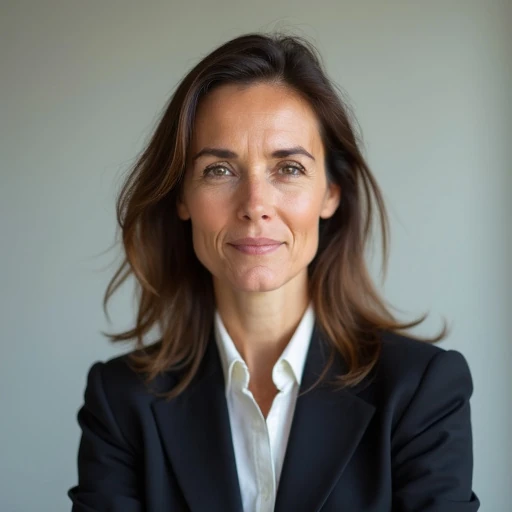Major Wall Street firms are actively developing new products to introduce private market assets, such as private equity and credit, into the retirement accounts of everyday Americans. However, this strategic push into the $13 trillion 401(k) market is meeting a significant obstacle: a widespread lack of awareness and demand from the very investors they aim to attract.
Despite the potential for diversification and higher returns, recent survey data reveals that most retirement savers are not actively seeking these alternative investments. This gap between industry ambition and public interest highlights the major educational and practical challenges asset managers must overcome to make private assets a mainstream component of retirement planning.
Key Takeaways
- Asset managers like BlackRock and Apollo are creating products to bring private market investments to 401(k) plans.
- A recent poll shows only 10% of investors are dissatisfied with their current 401(k) options and want alternatives.
- Awareness of private assets is low, with nearly 40% of people having never heard of private-credit funds.
- Higher fees, limited liquidity, and employer concerns over legal risks are significant barriers to adoption.
- Younger generations, including Gen Z and Millennials, show more interest in these investments than older savers.
A Push Meets a Shrug from Investors
Financial giants including Apollo Global Management, BlackRock, and Blue Owl Capital are targeting the vast 401(k) market, an estimated $13 trillion prize. Their goal is to offer mainstream savers access to private market assets, an investment class traditionally reserved for institutional clients and high-net-worth individuals.
However, the effort is running into a wall of investor indifference. According to a Harris Poll conducted for The Wall Street Journal, the demand for such products is minimal. The survey found that only about 10% of investors express unhappiness with their existing 401(k) investment choices and are actively looking for nontraditional options.
Low Familiarity with Private Assets
The awareness gap is substantial. The poll revealed that nearly 40% of respondents had never heard of private-credit funds. Only 15% described themselves as being highly familiar with these types of investments, which typically involve lending money to privately held companies.
Despite the low initial awareness, there is potential for interest to grow with education. After the concept was explained, a majority of respondents showed curiosity. Approximately 59% stated they were interested in the idea of investing in private firms, which constitute a significant portion of U.S. businesses with revenues over $100 million.
The Generational Divide in Investment Appetite
Interest in private markets shows a clear split along generational lines. The survey data indicates that members of Gen Z and Millennials are far more open to exploring investments in private companies compared to their Gen X and Baby Boomer counterparts. Younger workers appear more willing to experiment with their investment strategies, while older savers tend to favor traditional stocks and bonds.
Overcoming the Knowledge Gap
For many retirement savers, the primary barrier is a simple lack of understanding. Susan Cortes, a 24-year-old from New York, told the Journal that she had never heard of private investments before the survey. However, she expressed a willingness to consider them after learning more about the fundamentals of her 401(k).
This sentiment is common and underscores the educational challenge facing asset managers. To build name recognition and trust, firms are launching major brand campaigns. Apollo has run full-page advertisements in national newspapers, while Blue Owl has pursued high-profile sponsorships, such as at the U.S. Open tennis tournament.
The Argument for 'Democratizing' Finance
Proponents argue that bringing private assets to 401(k) plans is a way to "democratize" investing. The goal is to give average savers the same opportunities for diversification and potential growth that large pension funds and university endowments have long enjoyed. These institutional investors often allocate a significant portion of their portfolios to private markets.
Practical Hurdles: Fees, Liquidity, and Employer Caution
Beyond investor education, several practical and structural barriers are slowing the adoption of private assets in 401(k)s. These investments come with distinct trade-offs that differ significantly from publicly traded stocks and bonds.
Key concerns include:
- Higher Fees: Private market funds typically charge higher management fees than standard mutual funds.
- Limited Liquidity: Investments often have long lock-up periods, making it difficult for savers to access their money quickly.
- Complexity: The valuation and structure of these assets are more complex than publicly traded securities.
Employers Remain Wary of Risk
Ultimately, employers are the gatekeepers who decide which investment options are available in their company's 401(k) plan. Many large companies remain hesitant to add complex or high-fee products due to the risk of litigation. Legal experts note that employers have a fiduciary duty to act in the best interests of their employees, and they fear lawsuits from participants claiming mismanagement or excessive costs.
"Diversification is great, but only if the costs make sense," Logan Reed, a 41-year-old architect, told the Journal. He noted that the low-cost index funds in his 401(k), which charge less than 0.1%, are key to his long-term strategy.
The cost difference is notable. The average target-date mutual fund, a common default option in 401(k)s, carries an annual fee of around 0.28%. In contrast, a new target-date series from Great Gray Trust that includes private investments from firms like BlackRock charges approximately 0.38%.
The Long Road to Mainstream Adoption
The passive nature of many 401(k) investors presents another challenge. The Harris Poll found that more than half of plan participants take a hands-off approach to their retirement savings. Nearly 20% admitted they do not know how their money is invested, and almost half rely on target-date funds that automatically adjust their asset allocation over time.
This passivity makes it difficult for asset managers to convince workers to actively choose new and unfamiliar investment options. Despite this, some savers are intrigued by the potential for higher returns. Ryan Walker, 38, from Bayonne, N.J., said he wants his contributions to grow as much as possible and is open to learning about private market opportunities.
The federal government has taken steps to ease employer concerns. An executive order issued by former President Trump directed the Labor Department and the SEC to simplify rules for including alternative assets in 401(k) plans. However, legal advisors caution that new regulations may not completely shield employers from the risk of litigation.
For now, Wall Street's campaign to integrate private assets into mainstream retirement plans faces a dual challenge: it must first educate a largely unaware investor base while simultaneously convincing cautious employers that the potential benefits of these complex products outweigh the inherent risks and costs.





